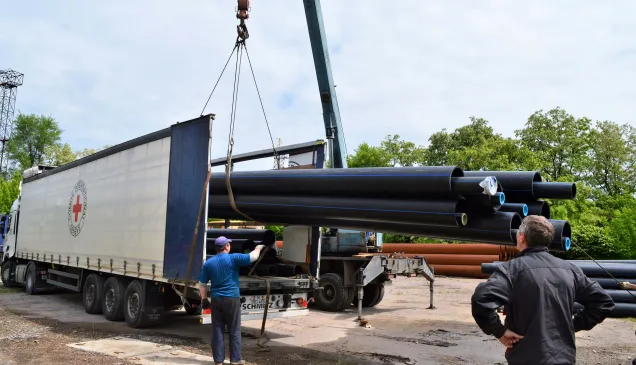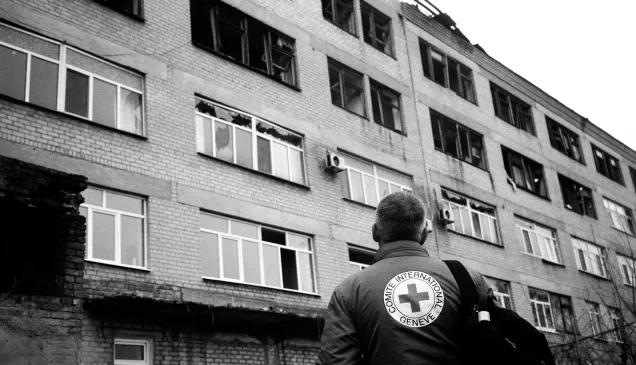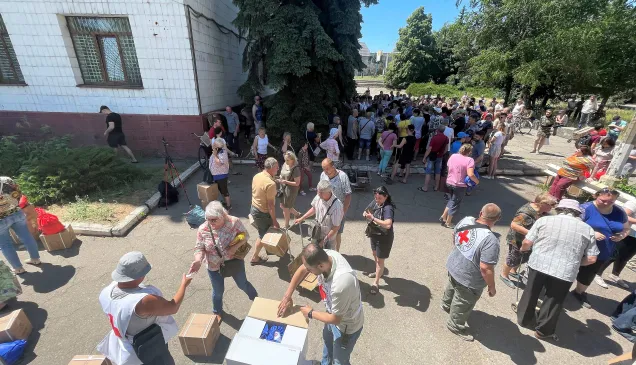Ukraine: DNA and Dignity for the Deceased

After the escalation of armed conflict between Russia and Ukraine, forensic facilities seeking to manage the deceased with dignity were nearly overwhelmed. To identify those who have died, DNA is key.
Not being able to help others – that was Nataliia’s greatest fear when the fighting in Ukraine escalated.
As the chief forensic expert of the comparative DNA testing department at the State Scientific Research Forensic Centre (SSRFC), she has since found a way to support those affected by the armed conflict.
“The least we can do for the dead and their relatives is to return the bodies to families for burial,” she tells us.
Yet before families can be informed that a deceased loved one has been identified and receive their remains, there is a long and complex process that needs to happen first. Nataliia’s work with DNA is key to that.
Like a fingerprint, each person’s DNA is unique. This makes it a useful tool when seeking to identify human remains whose names are still unknown.
By comparing DNA samples taken from human remains to those of close relatives seeking a loved one, it is possible to find an identification match from lists of people whose fate or whereabouts remains unknown.
When we first meet Nataliia, she is sitting in a sterilised lab, behind a pane of glass, wearing white coveralls, blue gloves and a face mask. She is using a small circular saw to extract a tissue sample from a piece of bone.
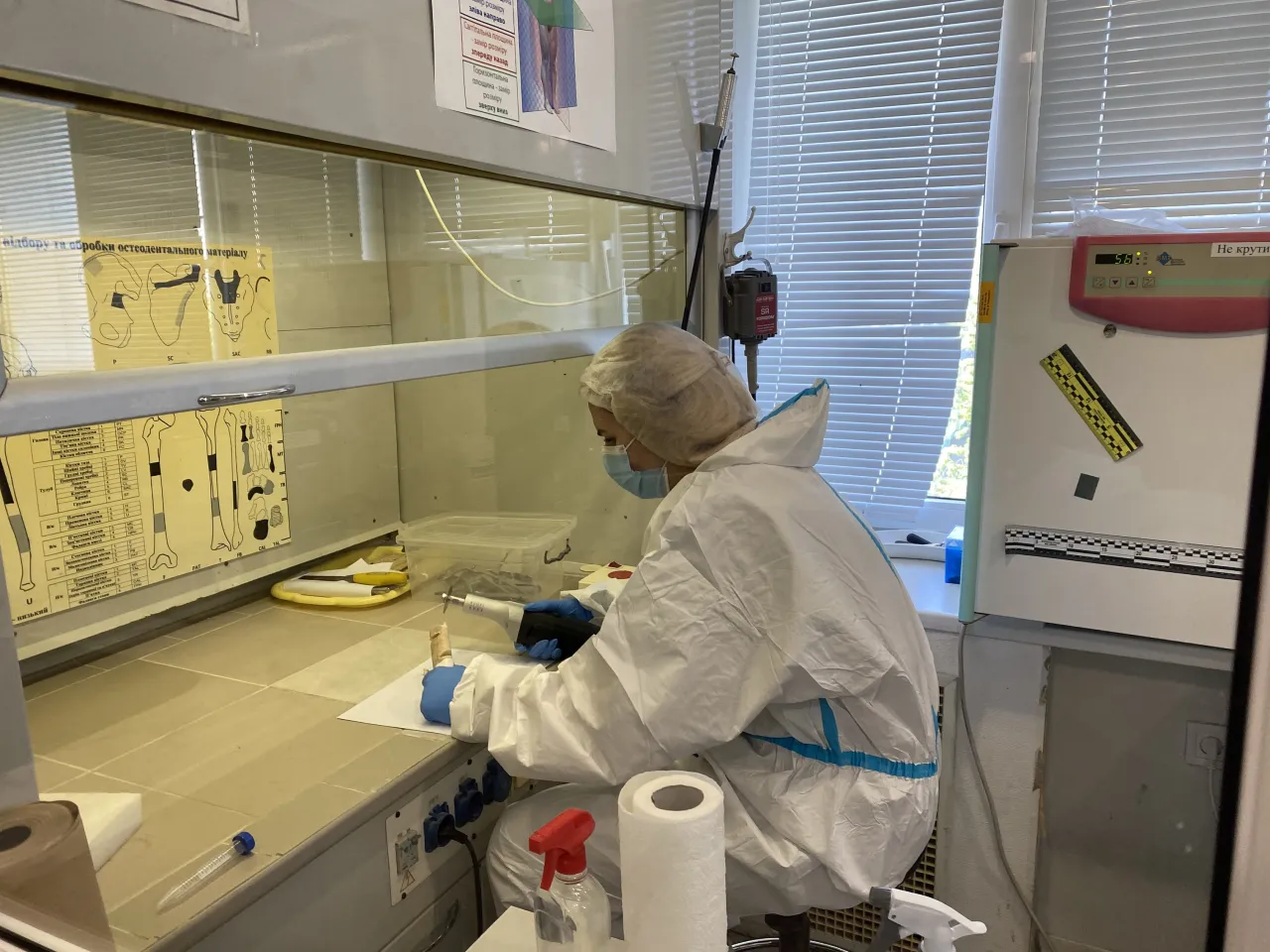
Nataliia, the chief forensic expert at SSRFC comparative DNA testing department.
This is just the first step, obtaining a sample from human remains that have not been identified. The sample belongs to a person, temporarily deprived of their name.
“Then we work in a laboratory to get the DNA profile and then run calculations, examinations, comparisons,” Nataliia says.
Eventually, Nataliia’s work results in the creation of a unique DNA profile for every unidentified person. “Then we can look for matches in our database of relatives,” she says.
Frontline recovery and transfers of remains
Across Ukraine, the work to identify the remains of soldiers or civilians who have lost their lives due to the armed conflict – to dignify them with a name – continues every day.
This task often starts close to the frontlines, where search-and-recovery teams face considerable risk retrieving the deceased. Ongoing hostilities, shifting frontlines and explosive hazards make this dangerous work.
The caseload of those that need to be identified also increases with each transfer of human remains organised directly between Russia and Ukraine. There have been more than 50 of these transfers since 2022.
At all times – in recovery or transfer; transit and storage – the remains of the deceased need to be treated respectfully, with dignity, in line with professional standards as well as international humanitarian law.
Eventually, human remains that have been recovered or received arrive at Ukraine’s forensic institutions – which work under great pressure – so that the process of identifying them can begin.
“One can try to do anything on their own, but when it’s teamwork, when there is support, it means a lot and makes a big difference for society, not just for us,” says Ruslan Abbasov, Deputy Director of the SSRFC.
His work involves coordinating forensic teams and sites, between ministries and agencies, as well as working with humanitarian partners, like the International Committee of the Red Cross (ICRC).
“For us, it means more capacity, but families feel the result through the pain and grief of when the identity of their loved one is confirmed,” Ruslan says of the support received from humanitarian partners.
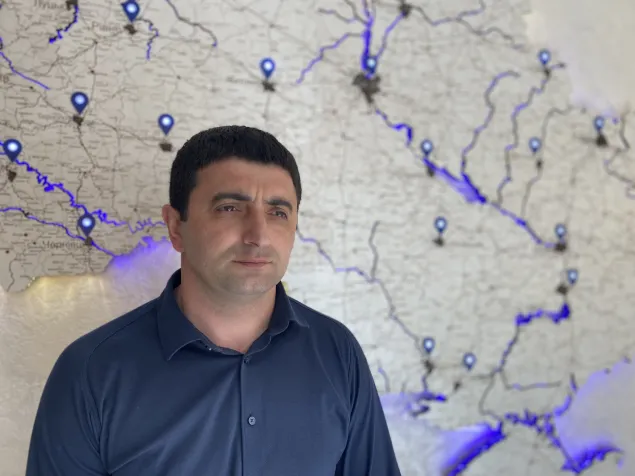
Ruslan Abbasov, Deputy Head of the State Scientific Research Forensic Centre.
The State Scientific Research Forensic Centre (SSRFC) is home to Ukraine’s centralised database of DNA profiles and a core part of its work is to collect DNA samples from relatives for the purpose of comparison.
It’s a time-consuming, expensive and emotionally heavy process.
The more distant the relative, the less similar the DNA. If no immediate family is available, then samples from a greater number of extended family are required – to increase the accuracy of the testing.
Many of those involved have questions and are keen to know about progress towards a result. The SSRFC receives 50 to 100 calls a day from people seeking information about this complicated process.
“There are countless occasions where we try to help those who call us. People understand that. They realise that their voice was heard,” Ruslan says. For him, it is simple, and essential, emotional support.
We try to help people to get the data they are looking for as quickly as possible. Even if we cannot alleviate their pain.
The scale of the task forensic institutions in Ukraine face is immense. Search-and-recovery takes time. Forensic and DNA methods of identifying the deceased take time. And, for now, the number to be identified only grows.
As of May 2025, the fate or whereabouts of 126,000 people from both sides of the armed conflict remains unknown, according to the number of open tracing requests held by the ICRC.
For those from that number who are not confirmed as prisoners of war, there is a chance that they have lost their lives – yet to be recovered or identified. The work to recover and identify everyone will take years.
For Ruslan, to get a real sense of the amount of work that lies ahead, it pays to learn from lessons of the past. He gives the example of Bosnia and Herzegovina, which experienced armed conflict in the 1990s.
“There, identification [of the deceased] is still underway,” he says.
“Our task is one for the coming years, or even decades, unfortunately,” he says. “But this is the reality. We are building our capacity because our future depends on it.”
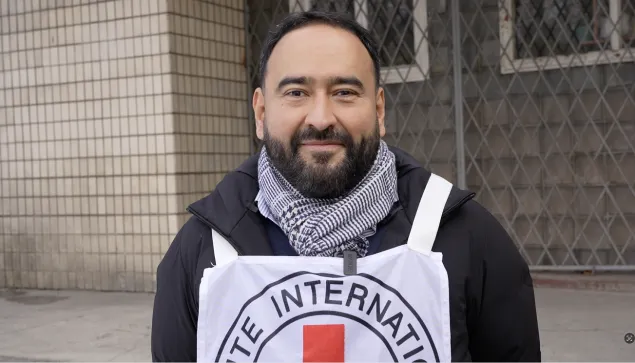
Andres Rodriguez Zorro.
Explaining DNA results
Andres Rodriguez Zorro leads the ICRC’s humanitarian forensic response in Ukraine, part of the organisation’s unique role in international armed conflicts to promote respect for those killed in action and in enemy hands.
For him, forensic work is not only about identifying the deceased but also about protecting their dignity.
When you identify the person, you are restoring their identity. This, in a way, dignifies the person.
For Andres, DNA is an essential part of the process of identification. “But it needs to be integrated with other sources of information and has to be explained in a proper way to the families,” he says.
That’s because, while DNA is the best and most discerning line of evidence, it is still a question of probability. DNA test results show what percentage of two samples match.
But how should families view those results? What’s the difference between a 98% and a 99%? And how can they be sure of a result if it isn’t 100%? This is where other forensic methods of identification can help.
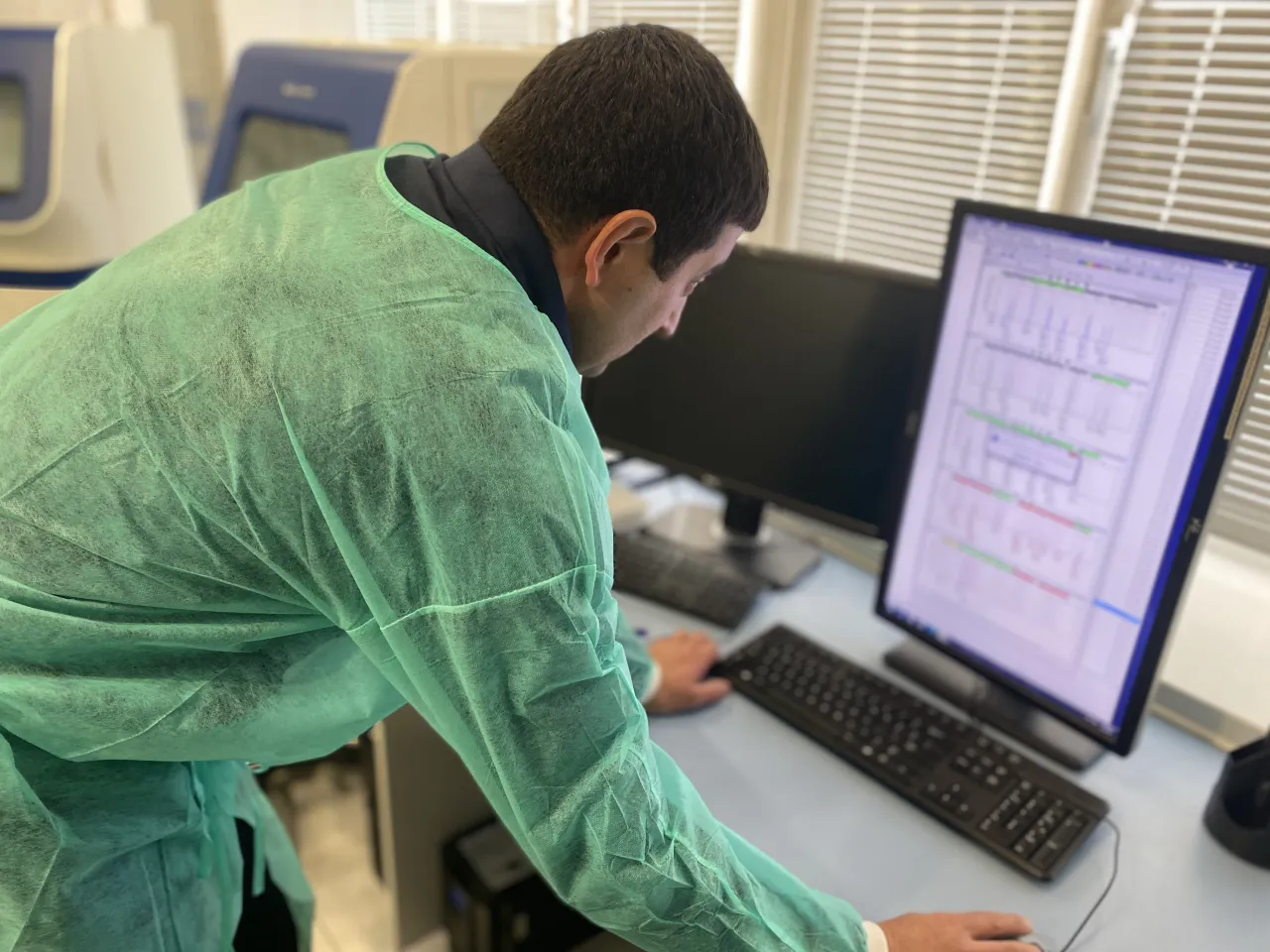
Ruslan Abbasov viewing DNA test results at the SSRFC.
Information from the human remains themselves – age, sex, height, fingerprints, dental records, tattoos – as well as where and when they were recovered all help corroborate DNA findings towards identifying a person. If personal items were kept with the remains, or if ID tags were used, even better.
Supporting families to understand the process is key for them to accept the result – especially if it is the worst news imaginable: confirmation that someone they love has died.
To that end, the SSRFC runs multiple education and communication sessions each week.
“They can be emotional, sensitive, but they are necessary because it helps people to understand what we do and what results we have achieved,” says Ruslan.
For Andres, supporting the SSRFC and other forensic institutions across the country is central to the ICRC’s humanitarian response.
Beyond providing DNA lab equipment as well as hundreds of thousands of sample collection kits, beyond conducting training or helping build or maintain forensic infrastructure, the work of ICRC forensic teams has also involved being present as a neutral intermediary at repatriations of human remains between Russia and Ukraine.
Driving from the site of these repatriations, often as part of a convoy of vehicles carrying the human remains of fallen soldiers, Andres remembers seeing people kneel by the side of the road as they passed through villages. Some people would carry flowers and religious icons. Some would pray or cry.
Tweet: https://twitter.com/ICRC_ua/status/1941069767575589183
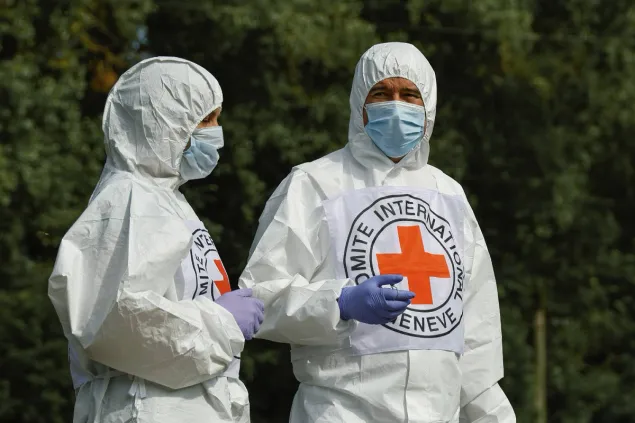
ICRC staff observing at one of the human remains transfers between Russia and Ukraine.
“It’s about the right of a person to have their identity restored and to be buried in their own country, and to be mourned in their own country,” Andres says.
For me, what we’re doing in the repatriations is a real act of humanity in an international armed conflict. It’s the proof that even in the most difficult circumstances, there is a space for humanity.
The repatriations are just the first step on the long road – via DNA and other means – towards identifying the deceased, to restore their names to them.

